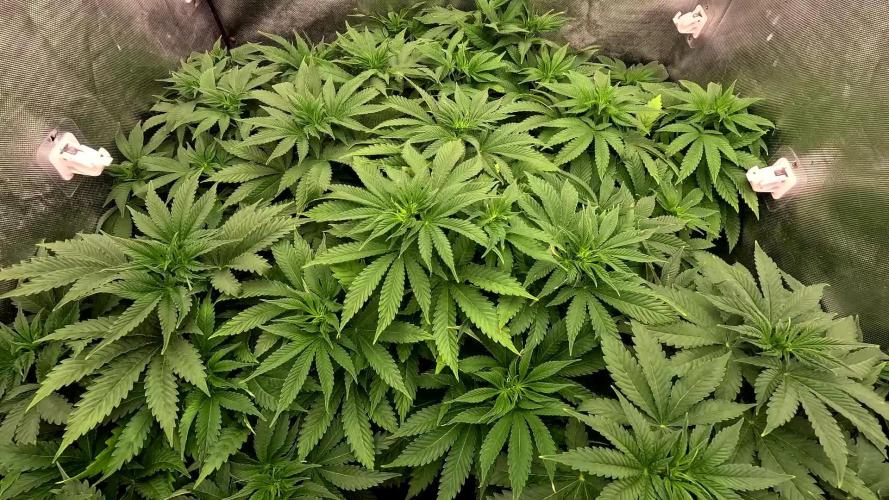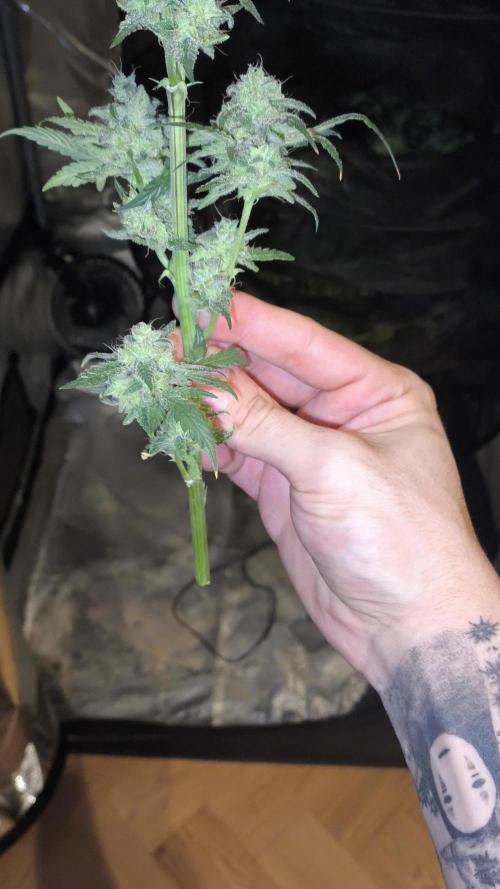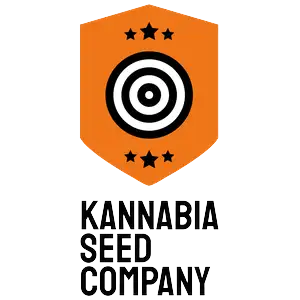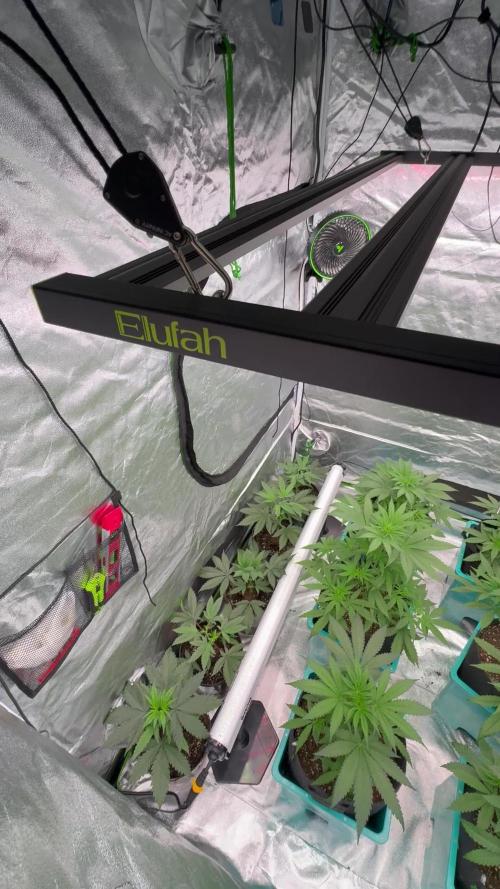The Grow Awards 2026 🏆 































Likes
Comments
Share


@Le_Duc_Du_Bud
Follow
Salutations amis cultivateurs 🍁🌿
Aujourd'hui on débute la 5 semaines de floraison 🗓️
La Colombian jack et magnifique, je lui donne 2 litres de nutriments tous les 2 jours, aucun problème de carence.
Je pense qu'elle restera de Petite taille , du fait a une coupe en semaine 2 de croissance trop tôt .
On voit maintenant des belle banane ce formé, odeur et incroyable ❤️🍁
Merci Kannabia variétés fantastiques 💥
Merci xpertnutrients impressionnant 💥
Likes
25
Share


@BigDaddyK
Follow
Starting to flower 🌹
Friday video fir you
Added another vid
Sunday added full power Fir 10 hrs
Likes
3
Share


@WeedM8
Follow
Hello m8 welcome to this journey with me in this diary will have very interesting strains hope u find something useful
O.G. Kush Titanium
- [ ] 1st week Veg: germinated in substrate lighting very close so it jets medium high humidity after the 3rd day they started sprouting
- [ ] 2nd week Veg: this week my ventilator broke down and as the temperature stayed very warm nothing developed much
- [ ] 3rd week Veg:fortunately this week i had fixed the ventilation and the temperature has go down a bit allowing the little plants to develop and reinforce
- [ ] 4th week:very good developments in this week I already started feeding a bit two times but i didn’t have to…once was enough
- [ ] 5th week Veg:this week they were very strong green i only had to water them good and keep the ventilators going no stop .They have good hight already ,but as i have to strains together. I want to transplant them when the hight of the other one have stretched… I’m thinking to transplant next week if not the next one
- [ ] 6th week Veg: this week it went great fortunatly i dont have pests that eat my buds i’ve givven a fed once the substrate is very rich already the plants streached very well i will transplant today so be ready m8 i cant wait to show you the progress
- [ ] 1st week Fl:they started stretching and looking very healthy just transplanted
- [ ] 2nd week Fl this week I’ve been away i had a friend taking care of them they stretching very well i hope that she starts putting energy into the flo
- [ ] 3rd week Fl:they are streaching very well ..getting the light very well
- [ ] 4th week Fl:there we aree guys the good stage is heree good high hope dosent effect de prod
- [ ] 5th week Fl:pumping very good this week a lot of changes started already being frosty
- [ ] 6th week Fl:this diaries its not daily updated this week its going’s so great we are close to harvest between next week and the other one . Ill harvest them at diffrent time just because they are not all at the same point of flowi
- [ ] 7th week Fl: im so satisfied from the way that this is going they didnt had any particular stress just that its 29 degrees during light and its going good so farr I haven’t constantly fed like on the peach g and pcr i hope for better taste at the end
Likes
34
Share


@LockDownGrow
Follow
Really into the massive stretch now I am having too move the climate control probe and thermostat every day now and these girls will soon cover the WiFi camera too , probably growing around 2 or 3 cm per 24 hours at this stage , " day 4 of week 5 "
The tent is filling up nicely but the fbt7 is a clear winner so far , be is my cock up of snapping the main stem and fixing it ? The ftb7 is double the size of all the other 3 plants and is a very nice little bush , the smoothie has been very consistently healthy and vigorous and is around 22cm now and is one I did not lst , the BlackBerry has finally woken up and is now the same height as the others another plant I didn't lst , the c1 started very vigorously and was strong , them week 3 started too show signs of very early flower , she is now is fully fledged flower at week 5 and looking fantastic , and I was lucky enough too get all the side branches out and bend over the main cola too the netting and has made up for in lst what it lacked in size due too the early flowering ,
Likes
Comments
Share


@gr3g4l
Follow
A los diez dias áprox. empezaron a mostrar los primeros pistilos.
Esta semana hubo que ponerles ya los calefactores para mirar de que no baje mucho la temperatura cuando se apaga la luz.
Processing
Likes
12
Share


@Tazard
Follow
These are clones that I managed to take from my summer garden that became a disaster due to a heat wave that we had breaking 100 year records. I expect everything to be 48” in height at maturity.
Likes
6
Share


@Sup3rNov4
Follow
She is beautiful. Slowed down on water intake but thats fine as I believe the roots are spreading before the fruits fatten
Likes
3
Share


@Liquido
Follow
Questa è la prima GMO che raccolgo, cime molto più dense rispetto alla runtz e sembra essere molto più pesante, tra qualche giorno raccoglierò l'altra e poi mancano solo le due più grandi
Likes
76
Share


@GrowBeforeHoe
Follow
The weather is so lovely ... warm and sunny that's quite unusual for our area.
The Quick Ones loving life and growing nice!
My Berry Haze seems a little damage and stressed from the transplant to the wild last week ... I hope she survive this stressful time.
The new seedlings also loving the sun ... Their will be ready for the transplant soon!
Stay tuned and as always
Keep Growing! 👍
Likes
55
Share


@w33dhawk
Follow
26.04.21 so Woche nummer 6 hat begonnen und ich habe heute an gelato #1 und #2 ein paar Blätter entfernt und die Pflanze gelato #1 ein wenig auseinander gespreitzt so das die buds ein wenig mehr Luft bekommen morgen nehm ich mir dann die anderen beiden vor, ein paar Blätter weg für mehr Luft Ach ja und unterm netzt hab ich heute noch die vergilbten und vertrocknet Blätter entfernt war auch ne gute hand voll aber is ja eh nur unnötiger Ballast für die pflänzchen und zum Geruch kann ich nur sagen der limoncello Duft der anfangs da war ist nicht mehr so kräftig dafür erinnert mich der Geruch an eine berühmte eismarke Ben &...... Und zwar 1 zu 1 cookies&cream 😂😂😂 was mich natürlich heute dazu animierte gleich nen becher zu kaufen.....
27.04.21 hab es heute zeitlich leider nicht geschafft gelato 41 #3 und #4 leicht zu entblättern und ein wenig auseinander zu ziehen um den buds Luft zu machen, hab das jetzt auf morgen verlegt, dafür ist mir aber aufgefallen das gelato 41 #2 anfängt ihre stigmas zu Karamell Farbe zu wechseln😵😵😵😵 Sie ist viel früher dran als die anderen und ich habe nur mein anbau Zelt zum trocknen ich hoffe das die anderen auch langsam hinter her ziehen das sie alle zeitgleich fertig werden sonnst is die eine sicherlich drüber übern Zeitplan beim Schnitt und mehr amber als die anderen von den trichomen her naja muss ich wohl durch.....
28.04.21 so heute hab ich es geschafft gelato 41 #3 & #4 ein wenig von blättern zu befreien damit auch die buds mehr Luft haben war auch ca 1 1/2 Hände voll Blatt Werk bin soweit zufrieden fürs erste....
29.04.21 heute war nix los im Zelt hab den Pflanzen beim wachsen zu geschaut und mal die ganzen buds begutachtet ob irgendwas an Krankheiten oder schimmel anwesend ist aber war nix da läuft würde ich sagen die ganze arbeit zählt sich aus denke ich mal Ach ja und unter den Töpfen im video das ist mein buddy sein name ist barney und er wollte auch mal hallo sagen normaler weise darf er nicht ins Zelt aber heute war ich nicht aufmerksam genug sonnst sitzt er immer ganz brav mit seiner Freundin vor dem Zelt wenn es auf ist und begutachtet alles von aussen obwohl die beiden manchmal eher so wirken als würden sie gucken das ich ja nix verkehrt mache....
30.04.21 heute stand nix an, hab das Gras schon fast wachsen gehört so gut finde ich den Fortschritt. Die Rechte Seite meines Zeltes sind die buds eher kürzer dafür aber mächtig fett und die linke Seite naja die ist eher länglich aber auch fett vom Umfang her nur länger, dafür is die rechte seite mehr kompakt und die linke Seite baut grad erst die dichte auf is aber auch schon gut fest....
01.05.21 heute war mal wieder giessen dran 4,5 L für alle 4 Ladys wollte heute eigendlich noch mal von unter dem netz an die Blätter ran und ein paar entfernen hab es aber mal wieder nicht gepackt zeitlich werd ich also morgen machen.....
02.05.21 hab es heute Geschafft wieder ein paar Blätter zu entfernen dabei sind mir diese hässlichen goldfarbenen Blätter aufgefallen heut morgen war es noch ganz wenig und 12 Std später is fast alles an dem einem bud befallen werde morgen die Ladys mal durch spülen mit Ph 6,5 und schauen was passiert. Hab extra drauf geachtet heute Temperatur im Zelt war heute genau 24, 8 in der Nähe des buds bemessen rh liegt tagsüber bei 47% nachts bei 57% und die Nacht Temperatur liegt bei 16,9.....
Likes
5
Share


@T3METRO
Follow
Struggling with nute lock then I over flushed but it seems like it leveled out now.
I'm thinking she might only have 1 more week in her. Let me know what you think.
Likes
10
Share


@Jozef_Balcerek
Follow
Dzien 44 Podlane PH 7.0 1.1L na roślinne. na jednej jedno ognisko hermy (Chemdogging), usunięte zobaczymy co będzie dalej. Panny się wyciągają, mam nadzieje PH ziemi wróci do wartości pożądanych. Warunki stabilne temp. 25-26C wilgotnosc 55-60%
Likes
33
Share


@Sweetie420
Follow
Starting week 2 with lighting under Hps 600w lamp. All three plants growing very fast and healthy 😊 💣💣💣💣
Likes
7
Share


@Akapibara
Follow
Day 15 -
She went for few days outside (not for night of course!) she'll get some fresh air and a lot of sun!
Day 16 -
She's good now i think.
Day 18 -
She grow like crazy now!
Day 20 -
Her next stage of leaves is incoming i think
Likes
7
Share


@Cultivatorcarlos
Follow
Week 4 was actually pretty smooth. she was showing nitrogen and potassium deficiencies because she was being terribly underfed and because i had weened her off the veg nutes WAY too soon. I found the dyna gro nutrient schedule and ive been following that. i will definitely be following the schedule much better next round as i wasnt actually aware they had a schedule out. Shes currently week 5 day 1 and shes already fat af and super trichomey.s he still got at least 2 weeks left. she might be ready by week 7 honestly tho who knows guess well see. Ive been giving her 1 gal each time of dechlorinated tap water just straight water. it has been phd to 6.6 ph. runoff tested at 6.3 ph. will probably flush one last time before continuing the bloom feed.
Likes
20
Share


@DeepRootsGrowTrees
Follow
NORTHERN THUNDERFUCK AUTO / RQS
WEEK #10 OVERALL
WEEK #5 FLOWER
No real issues to report this week she's looking good and doing good her buds are really starting to get great trichome coverage and they are getting sticky she also smells great. Stay Growing!!
Thank you for stopping by and taking a look it's much appreciated!!!
Thank you ROYAL QUEEN SEEDS!!
NORTHERN THUNDERFUCK AUTO / RQS






















